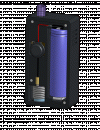Farid
Well-Known Member
I wanted to share a design which I have been working on in my free time. I have no plans to manufacture this, but I wanted to share the idea with likeminded people here on FC.
The premise of this design is to make a vaporizer which combines the heat exchanger and the dosing capsule into one entity. Unlike other vaporizers in which dosing capsules are optional, this vaporizer would be designed around dosing capsules, and the capsule would be required in order for the device to function.
The main goals with this design were to:
1) Create a capsule which utilizes microchannels, to optimize heat transfer, and allow for incoming cold air to be preheated significantly, thus reducing temperature drop during inhalation.
2) Create a capsule system in which a hot/spent capsule can be ejected by depressing the mouthpiece. Likewise the mouthpiece can be stored inside the device during transport.
3) Create an on demand electric conduction vaporizer designed around small doses and single big hits.
Here are some pics:
Animation:
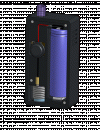
Outside View

Door Removed
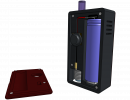
Bottom View:

Capsule (outside):
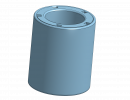
Capsule (cover removed to show microchannels):
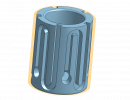
There’s a lot that would still need to be ironed out for this design to go anywhere. The chip and electronics still needs lots of work. Tolerances haven’t been accounted for, and the frame design would need some tweaking to accommodate easy manufacture and assembly.
I mostly threw this together to show the capsule/heat exchanger combo design. Let me know your thoughts.
The premise of this design is to make a vaporizer which combines the heat exchanger and the dosing capsule into one entity. Unlike other vaporizers in which dosing capsules are optional, this vaporizer would be designed around dosing capsules, and the capsule would be required in order for the device to function.
The main goals with this design were to:
1) Create a capsule which utilizes microchannels, to optimize heat transfer, and allow for incoming cold air to be preheated significantly, thus reducing temperature drop during inhalation.
2) Create a capsule system in which a hot/spent capsule can be ejected by depressing the mouthpiece. Likewise the mouthpiece can be stored inside the device during transport.
3) Create an on demand electric conduction vaporizer designed around small doses and single big hits.
Here are some pics:
Animation:

Outside View

Door Removed

Bottom View:

Capsule (outside):

Capsule (cover removed to show microchannels):

There’s a lot that would still need to be ironed out for this design to go anywhere. The chip and electronics still needs lots of work. Tolerances haven’t been accounted for, and the frame design would need some tweaking to accommodate easy manufacture and assembly.
I mostly threw this together to show the capsule/heat exchanger combo design. Let me know your thoughts.
Attachments
Last edited:

